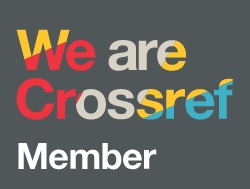Radiomorphometric of the Jaw for Gender Prediction: A Digital Panoramic Study
DOI:
https://doi.org/10.47895/amp.vi0.3175Keywords:
gender, mandibular, maxilla, panoramic radiographAbstract
Background. Gender identification by using skeletal identification is an important tool in forensic, medico-legal, bioarkeology, and anthropology. Traditional morphological methods depended on the anthropologist subjectivity that caused a significant difference among the observer. This study aims to develop the discriminant function for gender prediction in a Surabaya-Indonesia population age ranges 15-25-year-olds by using a panoramic radiograph. This research used 273 panoramic radiographs consisted of 129 male panoramic radiographs and 144 female panoramic radiographs. The researchers measured 11 parameters of the jaw such as two gonial angles, two mandibular ramus heights, two mandibular ramus widths, two mandibular corpus lengths, two nasal line maxilla, and anterior mandibular corpus heights. The researchers analyzed the data by using the discriminant analysis of the IBM SPSS statistic 24.
Results. the result of our study shows there were significant differences in the jaw morphometry between males and females, except the mandibular ramus widths. The jaw size in males was larger than that of the female. The biggest dimorphism variables based on the Wilks lambda value were gonial angles, mandibular ramus heights, mandibular corpus lengths, and nasal lines. While the smallest dimorphism variables were mandibular ramus widths. The accuracy of discriminant analysis for each variable ranges from 47.3% to 93.8%.
Conclusion. This preliminary study in Surabaya-Indonesia population age ranges 15-25-year-olds by using panoramic radiograph shows the highest accuracy of gender prediction by using discriminant function was obtained from the combination of the nine jaw parameters.




.jpg)



